Description
433MHz Antenna PCB Design Internal Antenna
The 433MHz Antenna PCB Design Internal Antenna CTRF-ANTENNA-PCB-0433-6175-IPEX item is an indoor PCB antenna Designed by C&T RF Antennas Inc 433MHz Antenna with a 61×7.5mm size PCB board and RG 1.13 100mm long coax cable length MHF U.FL Ipex connector mount to terminals for a wide range of wireless applications.
C&T RF Antennas Inc provides internal & external antennas with the antenna radio frequencies such as NFC, 169MHz, 230MHz, 315MHz, 433MHz, 868MHz, 915MHz, VHF&UHF, Lora, NB-IoT, ADS-B, GSM, GNSS, Wifi 2.4GHz, 5.8GHz, Cellular 2G 3G 4G LTE, GPS, 5G NR, etc.
C&T RF Antennas Inc. provides RF antennae with Omni & Directional antenna types such as Dipole Antennas, Whip Antennas, Marine Antennas, Router Antennas, MIMO Antennas, Combo Antennas, PCB Antennas, FPC Antennas, Spring Antennas, Magnetic Antennas, Sector Antennas, Yagi Antennas, and Accessories, etc, for IoT & M2M industries.
The 433MHz Antenna PCB Design Internal Antenna Is Available At C&T RF Antennas Inc., We Offer The 433MHz Antenna PCB Inventory And 433MHz Antenna PCB Pricing, 433MHz Antenna PCB Datasheet, and other 433MHz Antenna PCB Antennas.
433MHz Antenna PCB Design Internal Antenna Specifications
433MHz Antenna PCB Design Internal Antenna Electrical Specifications |
|
| RF Antenna Type | Embedded PCB Antenna |
| Model | CTRF-ANTENNA-PCB-0433-6175-IPEX |
| Frequency Center | 433MHz |
| Gain | 5dBi |
| VSWR | ≤2.0 |
| Impedance | 50 Ω |
| Polarization | Vertical/Linear |
| Cable Type | RG1.13 |
| Connector | IPEX |
| Cable Length | 100mm |
| Lightning Protection | DC-Ground |
433MHz Antenna PCB Design Internal Antenna Mechanical Specifications |
|
| PCB Board Dimension | 61*7.5mm |
| Weight | Approx. 3g |
| Material | FPCB + RG Cable + U.FL connector |
| Operation Temperature | -40˚C ~ +85˚C |
| Storage Temperature | -40˚C ~ +80˚C |
| Color | Black |
| Antenna Design | Dipole Array |
| Mounting | Connector/Sticker |
| Safety Emission and other | RoHS Compliant |
| Applications | Public Safety/LMR/P25/TETRA, ISM/SCADA/Utilities, RFID, IoT/NB-IoT/LoRa, etc. |
433MHz Antenna PCB Antenna Features

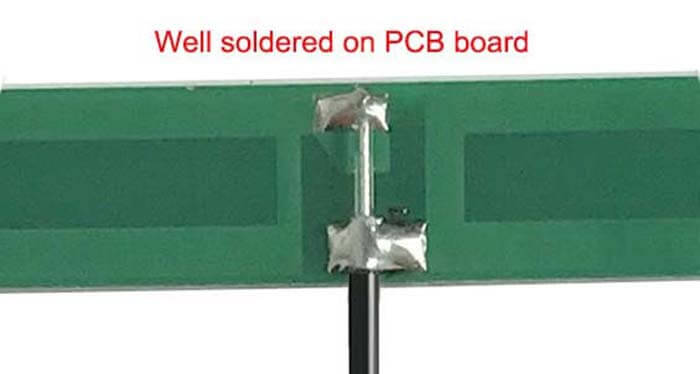
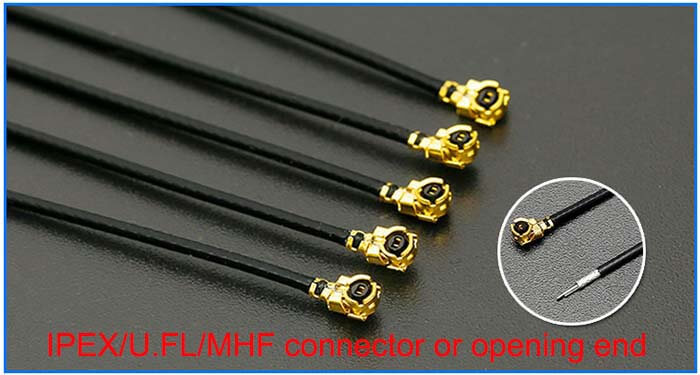
433MHz Antenna PCB
In IoT applications, BLE, 433MHz, Wi-Fi, 2.4G, GPS, GPRS, etc. are all frequently mentioned technologies. Among them, 433MHz has a wide range of applications, but it is not well known. This article will start an introduction to 433MHz from several basic knowledge points.
Radiofrequency is a non-contact automatic identification technology that emerged in the 1990s. It is a short-distance, low-complexity, low-power, low-data-rate, and low-cost wireless communication technology.
The advantage of this technology is that some products do not need to be re-wired, and point-to-point radio frequency technology is used to realize the control of home appliances and lights.
The installation and setting are more convenient. It is mainly used to realize the control of certain specific appliances or lights, and the cost is moderate.
Radiofrequency cards are divided into low-frequency radio frequency cards, intermediate frequency radio frequency cards, and high-frequency radio frequency cards according to the carrier frequency.
What is 433MHz?
The 433MHz wireless transceiver module uses high-frequency radio frequency technology, so it is also called the RF433 radiofrequency small module. It is composed of a single-IC RF front-end produced by all-digital technology and ATMEL’s AVR single-chip microcomputer.
It can transmit data signals at a high speed, and it can package, detect, and correct wireless data. The components adopt industrial-grade standards, work stably and reliably, and are small in size and easy to install.
It is suitable for a wide range of fields such as security alarm, wireless automatic meter reading, home, and industrial automation, remote control, wireless data transmission, etc.
Main 433MHz Specifications
1. Communication method: AM
2. Working frequency: 433MHz
3. Frequency stability: ±75KHZ
4. Transmitting power: ≤500MW
5. Quiescent current: ≤0.1uA
6. Emission current: <35mA
7. Working voltage: 3.6~5.5V
8. Modulation method: FSK
9. Working channel: 32 frequency band options
10. Transmission distance: low power 500m, high power 800m
Main 433MHz feature
1. Interface mode: 232/485/TTL/USB serial port, format 8N1/8E1/8O1 optional
2. High receiving sensitivity, reliable line-of-sight transmission distance up to 350m
3. Modulation by FSK, support OOK/ASK/MSK modulation
4. The carrier frequency is 433 MHz and other ISM frequency bands such as 315M/868M/915M can be customized
5. Provide PC configuration software, which can flexibly set various parameters of the module
6. Serial port rate: 4800/9600/19200/38400/57600/115200bps
7. Air rate: 5K/10K/20K/30K/40K/50K/77K/100K/150K/200K/250Kbps
8. Power consumption and sleep power-saving mode: power <10 MW, receiving current <25mA, transmitting current <35mA, current during sleep <8uA
9. Support multiple-word network group working modes, only modules with the same network address configuration can communicate with each other
10. With the relay function, relay nodes can be selected for transmission, effectively expanding the transmission distance
11. Support transparent transmission mode and address transmission mode, and can form point-to-point, point-to-multipoint, point-to-multipoint, and other wireless communication networks
12. You can choose a 3.3V or 5V DC power supply
433MHz Advantage
433MHz module has a very wide range of applications. Compared with 2.4GHz technology, it has its own unique advantages, such as long-distance, strong penetrating power, and superior diffraction ability.
It is suitable for small data applications, such as sensor data acquisition, various Automatic controls, and so on.
433MHz Network type
Through the rapid development of 433MHz radio frequency technology in recent years, various complex applications have been developed, such as MESH networking, ultra-low power consumption standby, etc.
The advantages of various chips have also been fully utilized.
433MHz Applications
■ Wireless smart terminals such as wireless POS machines and PDAs.
■ Fire protection, security, wireless monitoring of equipment room equipment, access control system
■ Traffic, weather, and environmental data collection.
■ Intelligent community, building automation, parking lot vehicle management.
■ Wireless control of industrial automation such as smart meters and PLC.
■ Logistics tracking, warehouse inspection.
■ Oil field, gas field, hydrology, mining data collection.

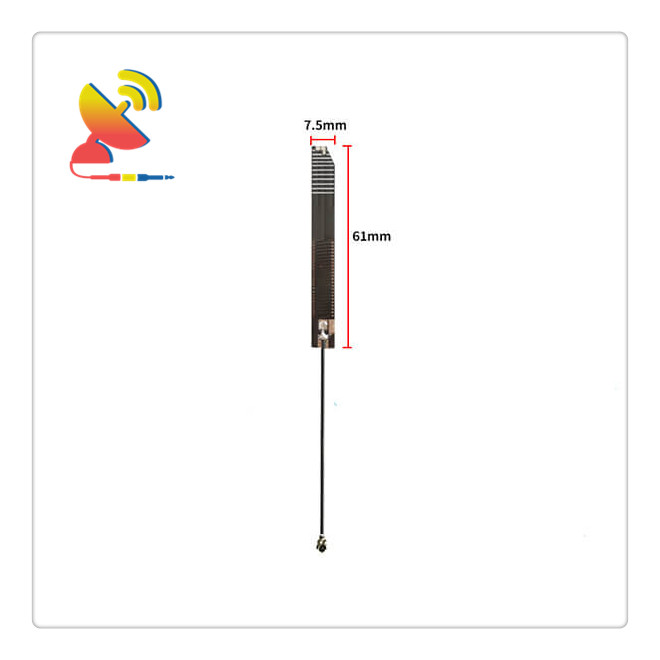
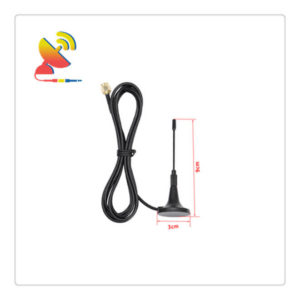
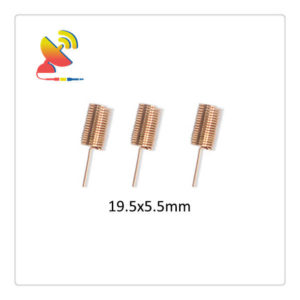
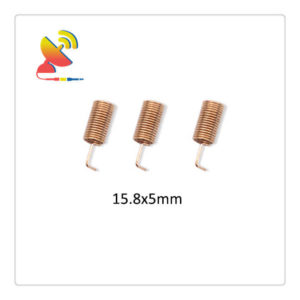
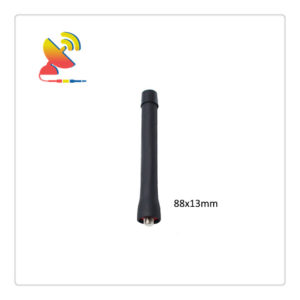
Reviews
There are no reviews yet.